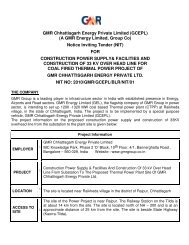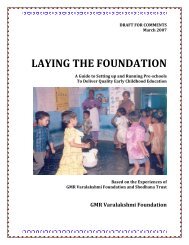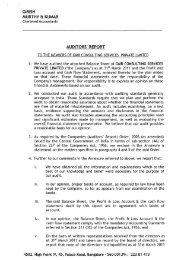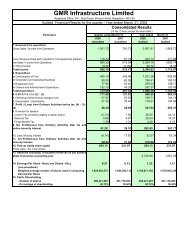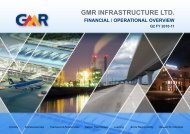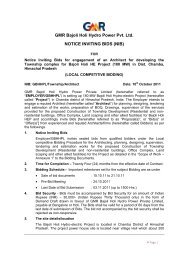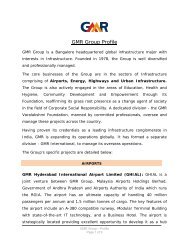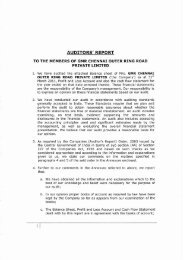PT Barasentosa Lestari - GMR
PT Barasentosa Lestari - GMR
PT Barasentosa Lestari - GMR
You also want an ePaper? Increase the reach of your titles
YUMPU automatically turns print PDFs into web optimized ePapers that Google loves.
<strong>PT</strong> BARASENTOSA LEST ARI <br />
NOTES TO JTINANCIAL STATEMENTS (Continued) <br />
March 31,2011 and 2010 <br />
(In US Dollar Currency) <br />
2. SUMMARY OF SIGNIFICANT ACCOUNTING POLICIES (Continued)<br />
j. Income Tax<br />
Current tax expense is provided based on the estimated taxable income for the year. Deferred tax<br />
assets and liabilities are recognized for temporary differences between commercial and tax bases<br />
of assets and liabilities at each reporting date. Future tax benefit, such as the carry forward of<br />
unused tax losses, if any, is also recognized to the extent that realization of such tax benefit is<br />
probable.<br />
Deferred tax assets and liabilities are measured at the tax rates that are expected to apply to the<br />
year when the assets are realized or the liabilities are settled, based on the applicable tax rates<br />
(and tax law) that have been enacted or substantively enacted at the balance sheet date. Changes<br />
in the carrying amount of the deferred tax assets and liabilities due to change in tax rates is<br />
charged to current year operations, except to the extent that it relates to items previously charged<br />
or credited to equity.<br />
Amendments to tax obligations are recorded when an assessment is received or, if appealed<br />
against by the Company, when the result of the appeal is determined.<br />
k. Impairment of Non-Financial Asset<br />
Non financial assets are reviewed for impaim1ent whenever events or changes in circumstances<br />
indicate that the carrying amount may not be recoverable. An impairment loss is recognized for<br />
the amount by which the carrying amount of the asset exceeds its recoverable amount, which is<br />
the higher of an asset's net selling price and value in use. For the purposes of assessing<br />
impairment, assets are grouped at the lowest levels for which there are separately identifiable<br />
cash flows (cash-generating units). Non-financial assets that have suffered impairment are<br />
reviewed for possible reversal of the impairment at each reporting date.<br />
1. Employee Benefits<br />
The Company provides defined benefit post-employment benefits to its employees in accordance<br />
with Labor Law No. 13/2003. No funding has been made to this defined benefit plan.<br />
The cost of providing post-employment benefits is determined using the Projected Unit Credit<br />
Method. The accumulated unrecognized actuarial gains and losses that exceed 10% of the present<br />
value of the Company's defined benefit obligations is recognized on the straight-line basis over<br />
the expected average remaining working lives of the participating employees. Past service cost is<br />
recognized immediately to the extent that the benefits are already vested, and otherwise is<br />
amortized on a straight-line basis over the average period until the benefits become vested.<br />
The benefit obligations recognized in the balance sheet represents the present value of the defined<br />
benefit obligation, as adjusted for unrecognized actuarial gains and losses and unrecognized past<br />
service cost.<br />
14




